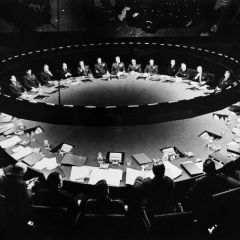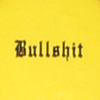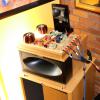Leaderboard
Popular Content
Showing content with the highest reputation on 02/24/14 in all areas
-
Welcome! I would not be afraid to try it! Just do not try to achieve excessive volume until you check it out.2 points
-
Was thinking about buying a SW-115, any intel as to when the NEW KLIPSCH SWs will be out??? If the New ones are coming out, I might want to play both ends against the middle.1 point
-
1 point
-
billybob, check out Danny Gatton's playing on Delbert McClinton's "Sun Medley" i.e. "Mystery Train/My Baby Left Me/That's Allright Mama", Some of the scariest guitar playing I have ever heard. Right up there with any playing laid down by ANY guitarist, EVER.1 point
-
His version of "Hey Joe" is pretty legendary for his explosive playing. I always liked his live album, "Loading Zone". Roy & Danny Gatton are 2 players whose skills were far superior to many of the more famous names in the pantheon of guitar playing.1 point
-
Michael, Sorry for crapping on this thread of yours the other day. But as I said I just couldn't help myself. But seriously I agree with the others that if you have eliminated any hum or buzz from your system and all you are hearing is a hissing especially from the tweeters this is perfectly normal and acceptable. This is called Gaussian or white noise and cannot be eliminated completely. You can try and try and spend lotsa money to bring it down a little bit. But as soon as the music starts it is masked anyway. Most attempts to supposedly fix this so called problem also diminish the high frequency performance of your speakers. Eric1 point
-
I was thinking more like music or a movie test just for a rough opinion of what you thought, that's more important imo. I would listen first and test later, don't want the test to affect what you hear, it should just try to explain it. You have the patience of a saint. Never thought of it that way, I will have to give it a try some time up stairs.1 point
-
I was thinking more like music or a movie test just for a rough opinion of what you thought, that's more important imo. I would listen first and test later, don't want the test to affect what you hear, it should just try to explain it. You have the patience of a saint.1 point
-
Gotta love it, no back up guitarists. Wow. I am not saying there is anything wrong with artists who have back up guitarists to take the load off, interject some other vibe/ talent, but to put on a 2 hour show carrying the full workload of vocals and guitar is saying something.1 point
-
Wilson Pickett with Duane Allman http://www.youtube.com/watch?v=0y8Q2PATVyI&feature=kp1 point
-
On a similar topic, if my salad fork is not perfectly aligned below the bread plate, I flip the @#$^!ing table over and stomp up stairs. Seriously how can one enjoy a meal under those conditions?1 point
-
1 point
-
Forget about it! Completely normal. In my book if you have put your ear up to the speaker to hear it your system is quiet.1 point
-
1 point
-
Hi guys, Newbie question. I have a small home theater setup consisting of the Klipsch HD500 (5.1 satellite/sub) speakers, powered by the Yamaha YMC-500 receiver. I haven't been satisfied with the HD500 for music, so I'm upgrading the speakers. Tomorrow, I'm picking up a pair of Klipsch Fortes, with Klipsch KG 1.5 for surrounds, and the Klipsch KV-3 center. No subwoofer in the new setup; I'm confident that the Fortes will do far better than the 8" sub in the HD500 kit. I'm looking forward to it! Now, I am concerned if the Yamaha YMC-500 will be adequate for the new speaker setup. It's a small receiver and low power. Frustratingly, it's own published specs are very unclear. All the manual says is: • Power Consumption: 50 W • Maximum Power Consumption 5 ch, 10% THD: 170 W Sound and Vision did a review of the YMC-500/700 a few years ago, and they published their lab results here: http://www.soundandvision.com/content/yamaha-neohd-ymc-700-media-controller-ht-labs-measures. Their key findings: Five channels driven continuously into 8-ohm loads: 0.1% distortion at 15.7 watts 1% distortion at 21.6 watts Speaker output with two channels driving 8 ohm loads: 0.1% distortion at 28.6 watts 1% distortion at 45.1 watts Speaker output with two channels driving 4 ohms: 0.1% distortion at 23.3 watts 1% distortion at 50.4 watts I'm not sure if this little amp will handle the larger speakers well. I know Klipsch speakers are efficient and don't need much power, but still. Adding to my concern: I don't know what the effect may be on the speakers if I drive them with an inadequate amp. My first intuition is to simply try it out when I pick up the new speakers tomorrow. But is it possible to damage speakers if the amp is terribly inadequate? TL;DR: I have two questions: Is the low-power Yamaha YMC-500 adequate to drive Klipsch Forte speakers (fronts), Klipsch KG 1.5 (rears), and Klipsch KV-3 (center)? If I'm not sure, is it okay to try driving these speakers with the YMC-500? Or do I have to worry about damaging the speakers if the amp is that inadequate? Thank you for your time.1 point
-
Superb, and thanks! Next time, ask forum for something hard. Do stick around though and let know how the Yamaha handles the KG1.5 added for the rears. A couple or more here were thinking you might hook up the sub, for a hoot. Have an older Yamaha AVR. Plenty of power. Can you hear any bass from the fortes'?1 point
-
1 point
-
1 point
-
I recommend to use the deox -it as well. I typically remover the covers and see if there is an access hole on the pots. I would be a bit trick to get it through the shaft. I do not use contact cleaner because it doesn't lubricate. Dave1 point
-
I picked up the Fortes this weekend and I'm happy to report that the little Yamaha YMC-500 seems to be doing alright. Also, I have to say something about the Fortes: wow!!!! Awesome! I'm absolutely loving listening to stuff with these. Absolutely wonderful. I'm very happy.1 point
-
I'll be giving the battery biased B2 networks a try. Dean perked my interest...We'll see what happens...1 point
-
You might have some other problems with your room if it sounded better in your old room. LaScalas are a bit "beamy". Personally, I think beamy can be a good thing because it can take the room out of the equation a little more than speakers with better dispersion. It does mean that you have to work a little harder to get them set right. A 1/8" change in the toe-in or movement in your chair can have a big effect. I find the louder I listen the more problems become evident. I don't get to listen over 80db much although around 85 is where I prefer most music. Any louder than that is only for 5 minutes or so durations.1 point
-
Would love to have another one so I could run both bridged for the Cornscalas. But, alas, I need medical attention and the tax refund won't cover it.1 point
-
Scrappy, Didn't say that you did and definitely not trying to troll . I just always see people saying that JL is not worth it, but except for those looking for max SPL, you never see anyone that is not happy with their JL. That is quite an accomplishment, even though they are expensive. Beeker, I agree, my next sub will be a DIY and I am going to use the fathom in a second system (but I have no plans to get rid of it). I can't decide between horn or direct, but I do love the process of going through designs and building. Any yes, for the money you will do much better with DIY, but then again, tag on a reasonable hourly wage for your labor and that completely falls apart. If you love the work, your labor is free.1 point
-
Clean Belle's are hard to come by. Derrick, the Belle sounds nearly identical to LaScala.1 point
-
1 point
-
St. Martin. Yes this is real. St. John Sky. Maybe a little Milky way there1 point
-
Fair enough! Meanwhile, if you haven't read, please read your thread. Good folk here!1 point
-
According to OP single post he has a sub. OP, the receiver is made to hookup to speakers. Klipsch speakers even better. All this worry over things that won't happen. If you make a mistake, there are speaker parts available. How is it sounding? Thanks1 point
-
Thanks, djk, for all the info. I'm still not clear on how much and what kind of protection the AK4 Klipschorn with the K77F tweeter has. I know it has a steep crossover slope, but I think it does not have the BeCU wire. I tend to play movies at Reference Level in our Klipschorn equipped Home Theater, which would have occasional peaks of 105 dB (not counting the subwoofer which is allowed louder peaks of approx 115 dB) at 16 feet (as adjusted by Audyssey). Should I worry?1 point
-
From an old post of mine: Drivers fail for two reasons: Excess average power Mechanical damage Clipping will not hurt anything if it does not cause the above problems. After larger amplifiers (above 50W) became common, problems with high frequency units self-destructing became a problem. A tweeter like the EV T35/Klipsch K77 could handle 5W continuous, 50W for 10mS peaks, so normal program material wasn't the problem. The tweeters were dying from mechanical failure. The voice-coil was wound with aluminum wire that ran out to the terminals on the frame (self-termination). Shallow slopes in typical crossovers (6dB) combined with higher drive levels produced failures. Copper wire was tried instad of aluminum (aluminum work-hardens in a very short time). Still, the failures continued. Klipsch switched to the 18dB crossovers in the very early 70s. This helped with the excursion failures. Now, 100W+ amplifiers became common. Klipsch went to cathode-to-cathode connected zener diodes. These clipped off the peaks that were mechanically destroying the tweeters. Things went well for about ten years. In the early 80s it was time to try and get rid of the expensive band-aid (the zener diodes). EV changed the lead-out wire from the self-terminated copper voice-coil wire to a flat BeCu wire like used on expensive JBL and Altec type compression drivers. A new network was designed with an elliptical filter with 50dB of attenuation only a half-octave away from the crossover point. A fast- acting instrumentation fuse was added. Problem solved? The new version of the tweeter used a UV cure adhesive vs the old thermo-set adhesive. After the fuses blew from modern program material (about the same time as the introduction of the CD), they got replaced with fast-blow types (which offered reduced protection). The special instrumentation types were very expensive, and very hard to find. The new UV cure adhesive got soft, bubbled, and failed quite easily. A PolySwitch was tried. Too slow. The old thermo-set adhesive came back. The combination of the super-steep crossover, the flat BeCu lead-out wire, and the PolySwitch seemed to work (with the old adhesive). The zener diodes were retired for mainly two reasons: cost, and limited dynamic range. The AA networks used a pair of 5.1V 10W zeners. These only allowed about 2W RMS through before they started clipping off the peaks (a 4W peak square-wave) . With the advent of digital program material, 2W of undistorted program material no longer seemed adequate (about 97dB at 10 foot). The zeners limited the maximum distorted output to about 100dB at 10 foot. Removal of the zeners allowed exploitation of the 50W/10mS rating of the tweeter, about 14dB more output capability (referenced to the 2W RMS zener clamp). What did EV do for products sold under their brand? The STR tweeter protector (relay based) was developed for this use. Later it was modified by adding a lightbulb in parallel with the relay contacts. I hope this give a little insight into what is needed for tweeter protection, and how we got to where we are. Vifa, Dynaudio, and others offer a choice between self-terminated tweeter lead-outs and a braided (or tinsel) type lead-out. The difference in cost for the braided type is worth it in my book. Most manufacturers of lower-priced product do not spend the money for this, or better crossovers either (although I am seeing lighbulbs and/or PolySwitches in some inexpensive product). Crossovers and tweeters must be designed to avoid mechanical damage in normal use (correct slope, frequency, and lead-out wire for the intended use). Long-term thermal protection is worthwhile. Some sort of switch device (relay, PolySwitch, fuse) in conjuction with a lightbulb seems to be the most cost-effective. Due to the long time constant of lightbulbs, most use does not seem to demand the switch (which shorts out the lightbulb in normal use). Suggested current levels: For 1" coils (tweeters), about 1A. The 561 or 211-2 automotive lamp has worked well in this application. For 1-3/4" coils (1" compression drivers), about 2A. The 1156 type automotive lamp has worked well in this application. For 3" (kapton) to 4" (nomex) coils (2" throat 16 ohm compression drivers), about 2A. I have found a 1.5A AGC (or 3AG) type fast-blow fuse will pass 400W of program material in normal use, and blow almost instantly if bad feedback is encountered. A pair of 1156 automotive lamps wired in series with each other, and then wired in parallel with the fuse will allow the show to go on when the fuse blows, and still offer some protection. If the fuse blows in the course of normal use, you need additional HF drivers, horns, and amplifiers.1 point
-
jacksonbart, you got it right, but BigStewMan referred to Rory as a Brit, and minermark posted "Rory is like the brits George Throgood". I was listening. Did you see those other posts? Ireland has enough issues, without some of its best musicians being mistakenly identified as being British. How would you like to see Bruce Springsteen being called a Canadian by an ill-informed fan from England? It would be just as ridiculous, and just as annoying. Sorry about the political mention. I don't mean to start a debate. The original post was completely correct, but some of the posts by others were not. We can all agree that Rory Gallagher was a great musician whose premature death was a tragic loss.1 point
-
You are on the right path, with a pretty good understanding. Just do not overdrive with the volume into distortion,etc...you are good to go.1 point
-
Wire should be laid neatly and not on top of each other. Here is a pic of how I have my wires behind the console.1 point
-
1 point
-
right now id love for you to have them , all kidding aside they are wonderful, I"m having second thoughts, as I"ve heard what they can do and my whole reason to buy them was they are exactly as i have said, I thought i might be able to build a system from the bass up (no pun intended). I own"ed Urei 813 at one time and they had the absolute best mid bass and impact I"ve ever heard, i thought pairing the 2 would make an awesome system (UGLY as hell but sound fantastic) I"m afraid if they don"t sell soon I"ll just pull them and continue holding them for a future set up Joe1 point
-
From a flight into Phoenix coming in from Tucson. It looks really cool on my ipad...1 point
-
A few years ago when we were allowed to park near the Blue Angels. Ron1 point
-
1 point
-
1 point
-
1 point
-
I've used isolation transformers to break ground loops. Works very well. Also when working on hot chassis radios. Well worth the investment. I have not used one for any of my 2 channel rigs though. Of course that's because I'm cheap and don't want to draw more electricity. [:|]1 point
-
Each transformer is held down with 4 screws into the chassis. There are no nuts under the chassis, so no need to remove the bottom cover.1 point































